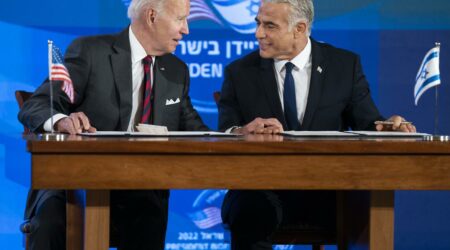In yet another signal of Capitol Hill’s political commitment to the India-United States strategic relationship, the Senate Armed Services Committee (SASC), in its version of the National Defense Authorization Act (NDAA), has asked Pentagon to step up its engagement with India on issues of “emerging technologies, readiness and logistics” within 90 days of the passage of the legislation.
Among other issues, the Senate version of NDAA has identified intelligence collection capabilities, unmanned aerial vehicles (UAVs), 5G, fourth and fifth generation aircraft, and joint research and development (R&D), as areas for cooperation with India. It has also asked the secretary of defense to submit a report on the issue to the appropriate committees in the Senate and House of Representatives within 180 days.
The Senate Armed Services Committee (SASC), which has piloted the legislation, has proposed an $847 billion budget for national defense in 2023.
The House passed its own version of the NDAA last week, incorporating an amendment that advocated for a sanctions waiver for India for its purchase of the S-400 missile system from Russia – an acquisition that could trigger sanctions under the Countering America’s Adversaries through Sanctions Act (CAATSA). The executive has the authority to give the waiver, but the passage of the amendment, proposed by Congressman Ro Khanna, with 330 votes is seen as a political signal to the administration.
In the Senate, as a part of a distinct process, the language on India has now been incorporated as a part of the base text. It will go through its own process of amendments and floor vote. And then the Senate and House versions will be reconciled in conference.
If the House amendment explicitly refers to the current threats faced by India, including from China, and speaks of the need to aid India’s diversification away from Russia, the Senate version of NDAA focuses on core policy areas for the future where both India and the US are seeking to deepen collaboration. It also lays out guidelines for the executive to follow.












